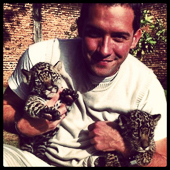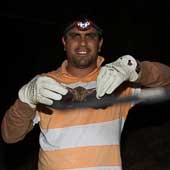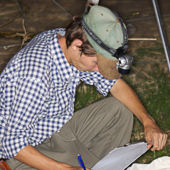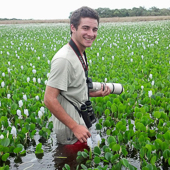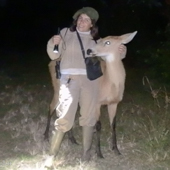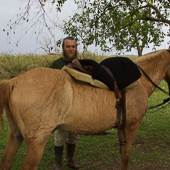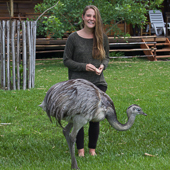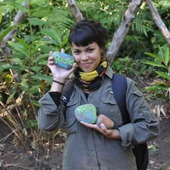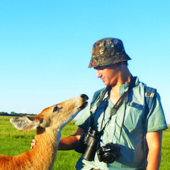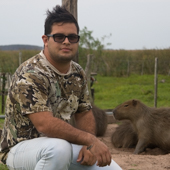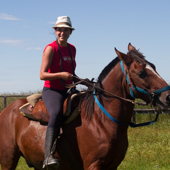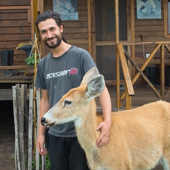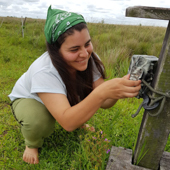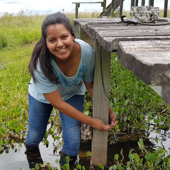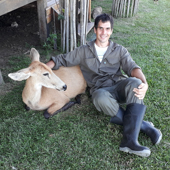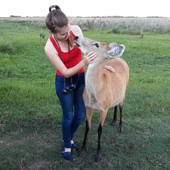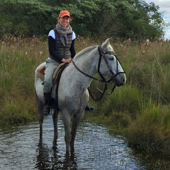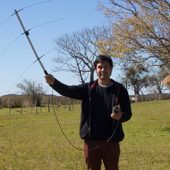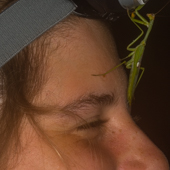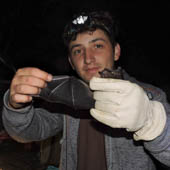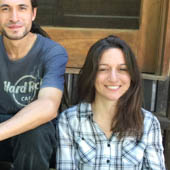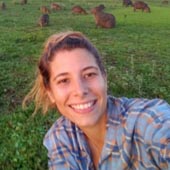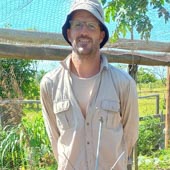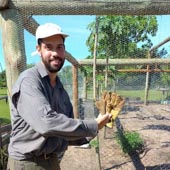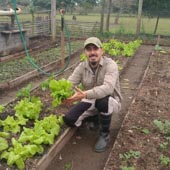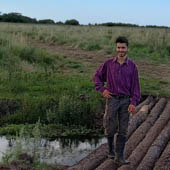
Strange Tails
We're delighted to have a strong population of strange-tailed tyrants at the reserve. So much so that we've adopted these beautiful and endangered birds as the symbol of the Trust
The growing diversity of the animals of Reserva Don Luis is a fresh source of delight every time we return. We don't play favourites, but it's impossible not to engage more with some of our more conspicuous guests. One of these is the strange-tailed tyrant. The male is stoic in his tolerance of one of nature's strangest - and it would seem least practical - adaptations. He's willing to suffer to be beautiful, and somehow manages to fly with tail feathers that were surely designed for a bird three times his size.
We love his perseverance; his resolution to succeed against challenge, and his ability to prove that anything is possible. He's appearing in growing numbers on the Reserva Do Luis, and his success has become an allegory for, and a symbol of, our own.
When we started the process of updating and redesigning our website, we wanted to adopt an image that symbolised our aims and our challenges. This brave little flycatcher, with his indomitable character, was the perfect choice.
The logo is a stylised profile of a male tyrant, silhouetted against the sunrise. We coloured the sun the blue of the Argentinian flag in honour of this country's beauty, its climate and the breathtaking span of magnificent animals that it nurtures.

Bat Research
Our bat team is conducting bat research both in the Ibera Marshes and in other provinces. We are especially concentrating on Misiones at the moment where we find the largest bat in Argentina, Chrotopterus auriitus and Myotis ruber, two species that we are researching.
Reserva Don Luis
.jpg)
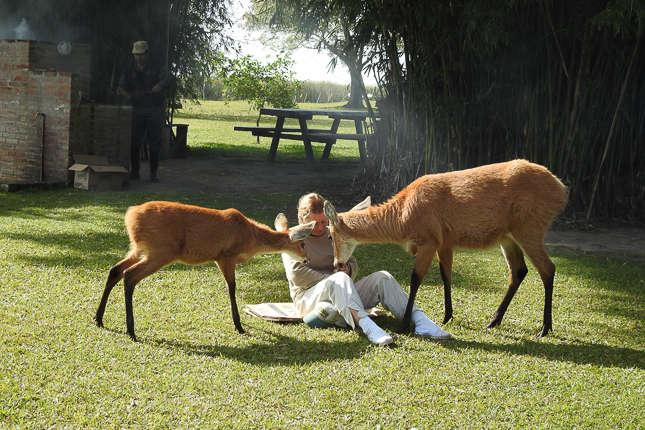
.jpg)
.jpg)
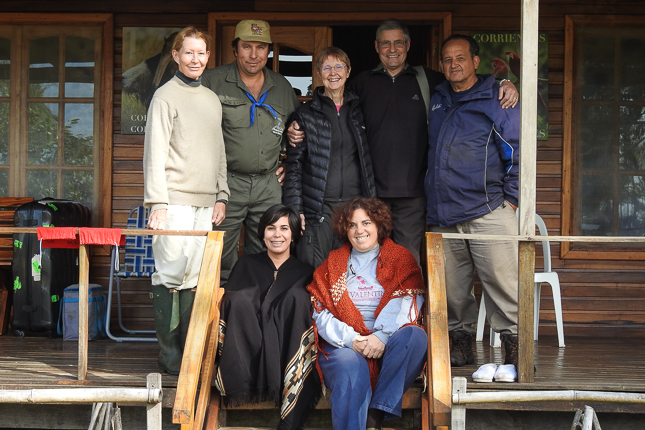
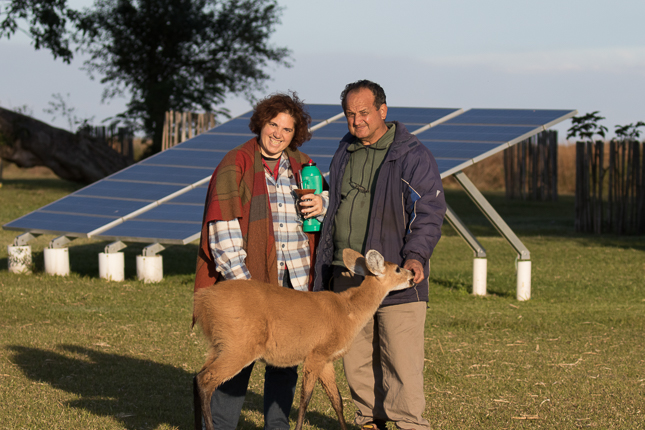
.jpg)
.jpg)
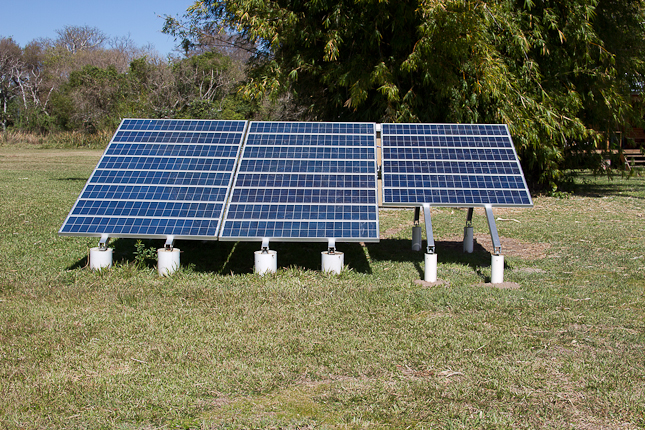
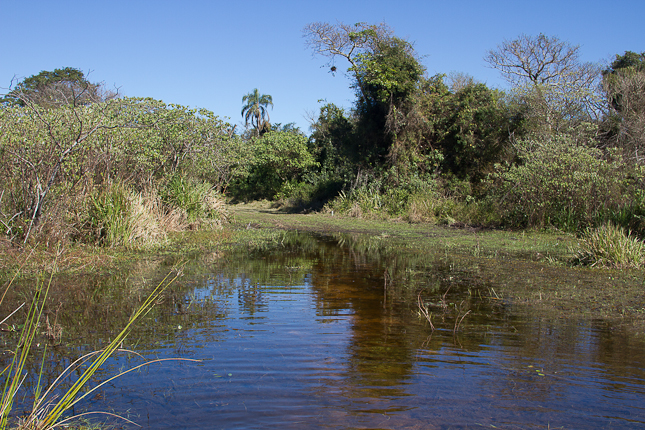
.jpg)
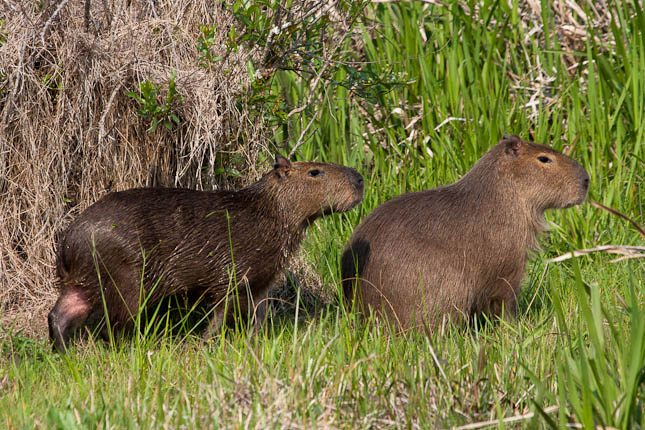
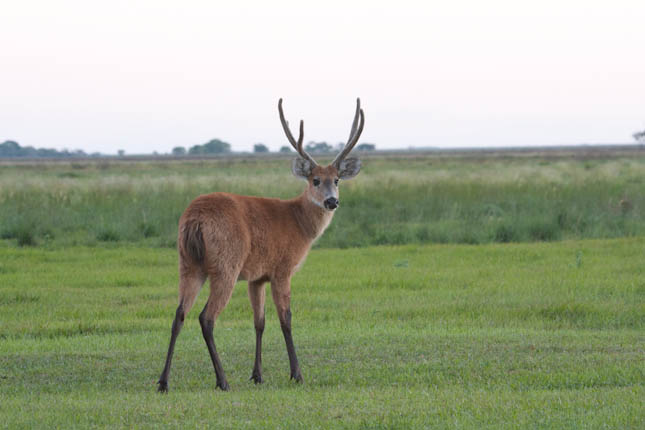
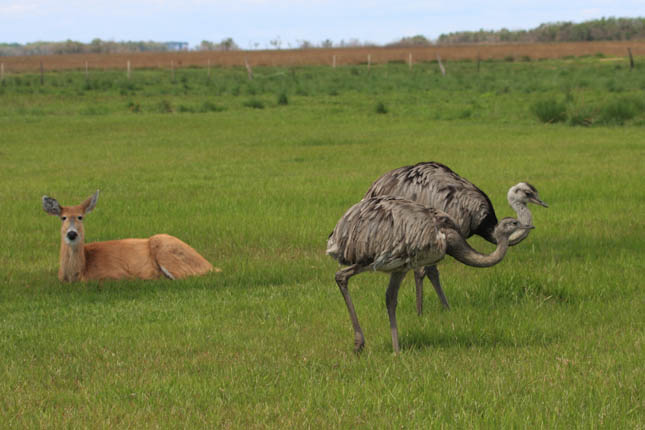
 (8).jpg)
.jpg)
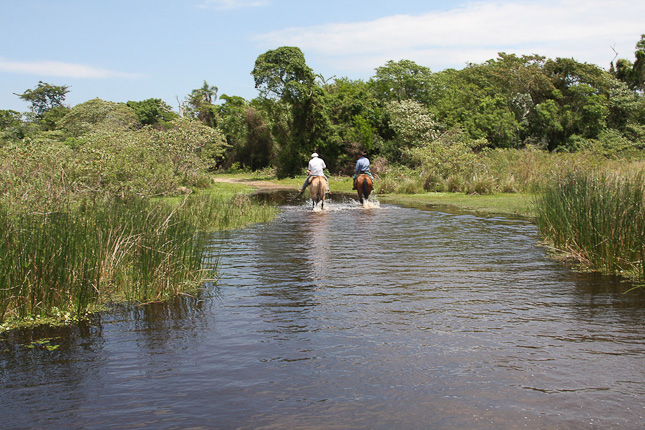
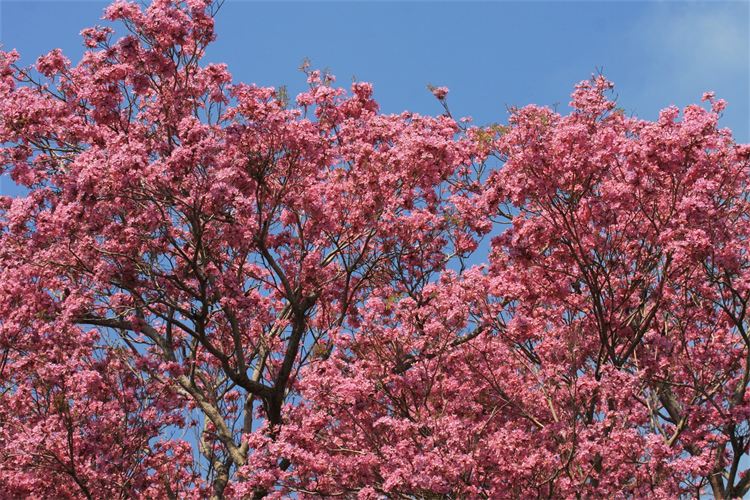
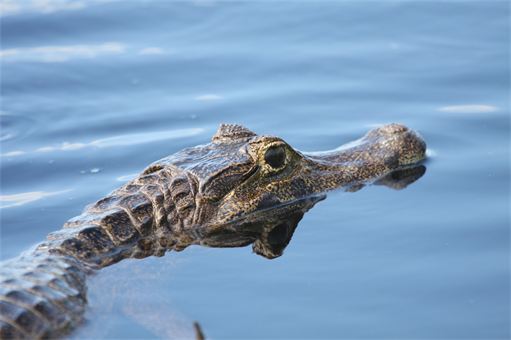

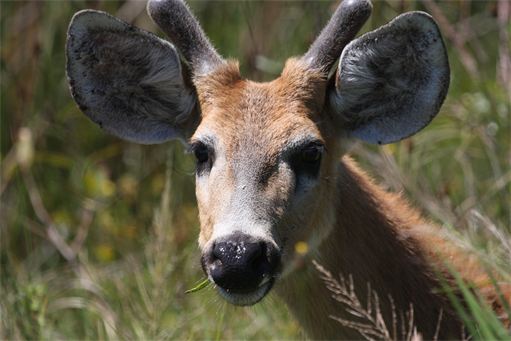
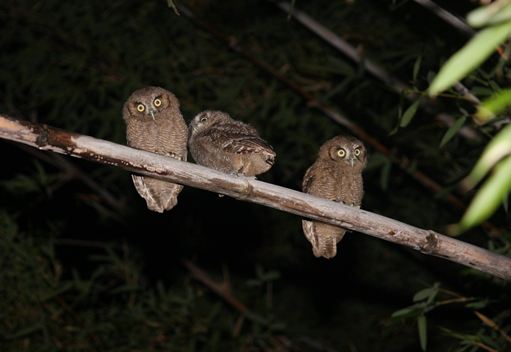
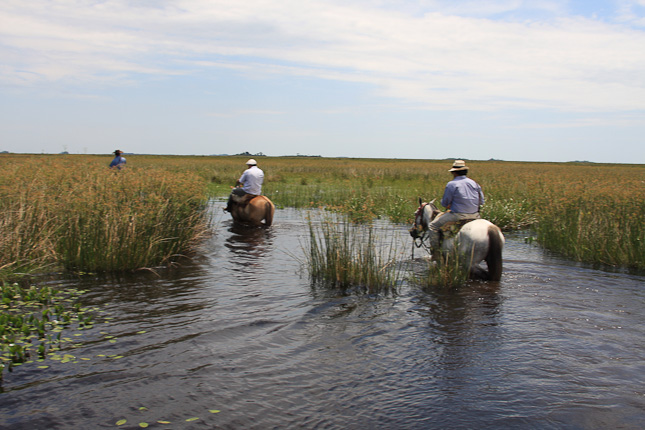
RESERVA DON LUIS
Esteros del Ibera
We purchased Reserva Don Luis in April 2010 after searching for 2 years for a suitable place for a reserve. We have had to work hard to restore this former cattle ranch to its natural state. As well as being a nature reserve we are also a research station and have several projects in the pipeline including our popular bat research program. We welcome visiting biologists and conservation scientists for research into our native species. We sometimes need volunteers, especially in the Argentine spring, to help with the running of the place. If you are interested please see our page on How you Can Help
Aerial Shot of Garden and buildings 2019
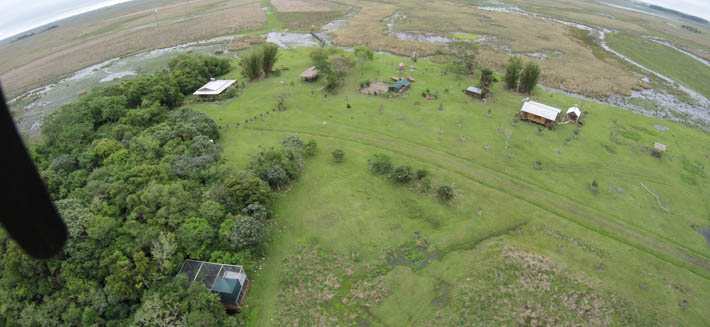
In 2015 we constructed a new bridge across our pond at the end of the garden. This pond completely dried up in the drought of 2012 but since then, with some very wet periods, it grew into a lake, and we had to make the bridge over 75m in length. The work was carried out mainly by our trustees and helpers to whom we are greatly indebted. From 2019-2023 we are again in drought and the water would have dried up completely if we had not constructed another borehole (deeper than the first one) and kept the flow going into this small lake.
Bridge at Reserva Don Luis
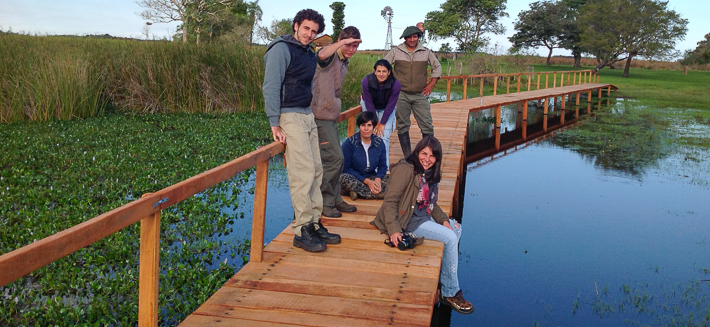
Our reserve consists of 1600 hectares of grassland/wetland and several small woods. We have many endangered Marsh deer grazing on our land and the Capybara population is expanding at a prodigous rate. The ponds to the south are full of Spectacled Caymans and in the woods we see Howler Monkeys, Gray Foxes, Armadillos, Crab-eating Racoons and Geoffroy's cats. In 2013 and 2022/3 we had several sightings of a Maned Wolf as well as images on our camera traps. These large mammals prefer dry conditions.
Maned Wolf caught on Camera trap
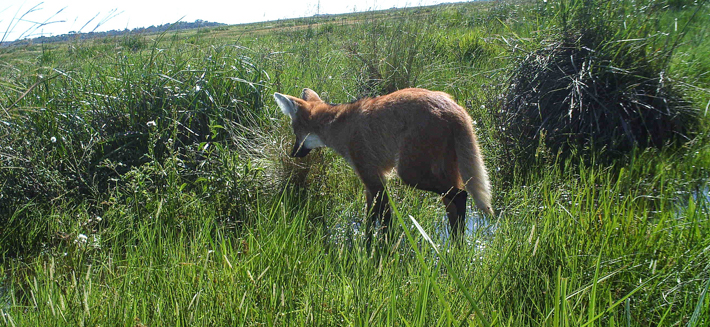
Volunteers' Cabin
We completed this extension to our ranger's house in August 2016. It is used as an independent unit for our volunteers.
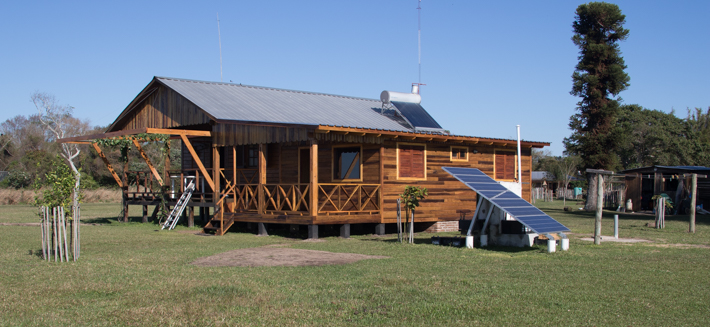
Siestera for Reserva
Our 'Siestera' is used for dining and is a great place in which to relax in the heat of the day. Since this photo was taken, we have added mosquito netting to the sides and doors.
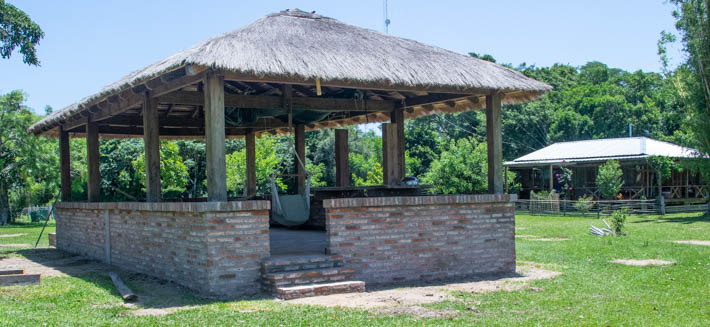
The Neotropical River Otters are occasionally seen around the reserve but we usually only get a glimpse, as they are very shy mammals.
Neotropical River Otter (juv)
.jpg)
We have many of the endangered (VU) Marsh Deer around the reserve and generally see at least one every day. We were privileged to host a semi-tame individual that we named Rosita who stayed with us for 8 years.She produced at least 8 fauns, some of which we see around the place. Sadly she dissappeared in 2019, never to be seen again but we still have the legacy of her daughter, Rosio, who is always around and brings her fauns into the garden.
This is Rosita with Valentin, her faun born on 14 February 2019
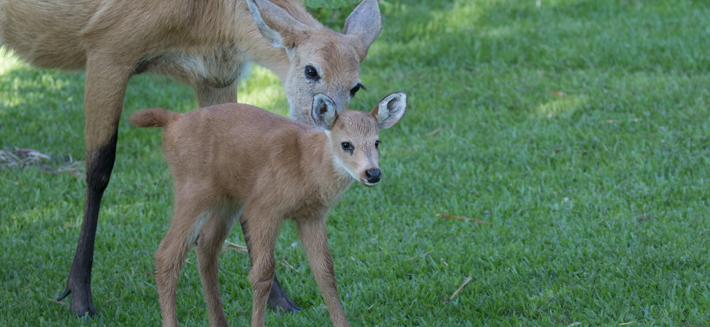
Don Luis has been transformed since we purchased it in 2010. Our trustees, rangers, volunteers have all put a tremendous amount of work improving the place and maintaining the habitat for our wildlife. Over the years we have planted many trees including a lot of fruit bearing ones for the birds and Howler Monkeys. We also have a successful organic vegetable garden which, along with our free-roaming hens, has made us self-sustainable.
The reserve is situated in the northern part of the Esteros del Ibera, about 40km to the southwest of a town called Ituzaingo. Our area is called Cambyreta and our road allows access to the Ibera Marshes from the north. We are only about 35km from the River Parana, which separates Argentina from Paraguay, and the climate is sub-tropical.
Misty Sunrise at Reserva Don Luis
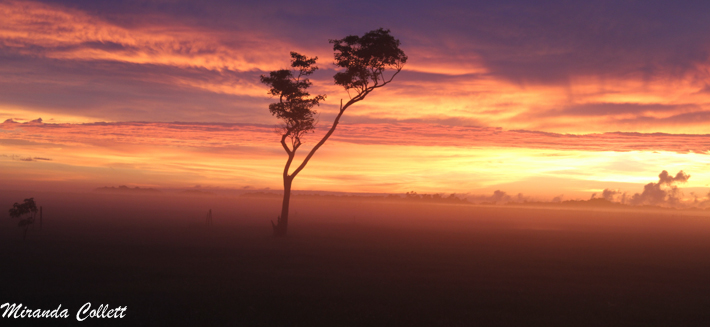
The only way to get around the property in an environmental manner is on horseback and we have eight horses which are cared for by Mario, our ranger.
Mario with 4 of our horses.
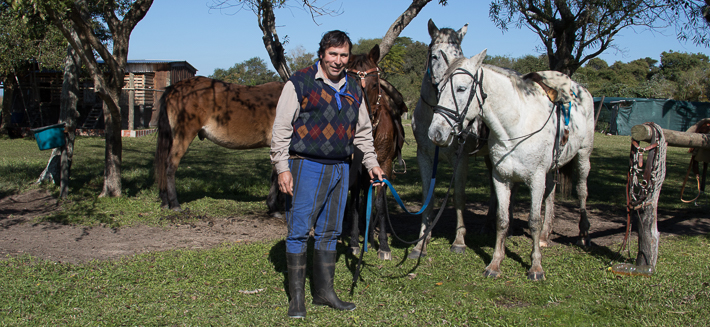
We have constructed two wooden houses for use by our ranger and ourselves, as well as a volunteer's cabin attached to Mario's house which is available for visiting biologists, researchers and volunteers. Our two main trustees now have their own home at the reserve, and we have 2 Lodges for visitors.
We welcome bird watchers by personal arrangement but we do not permit 'playback' at the reserve. If you are a keen birder and would like to come along please contact us using the contact form.
All of our houses are powered by solar pv and solar thermal which function successfully as we mostly have an abundance of sunshine. We also have a windmill which pumps water to the surface as a back up to our solar water pump. The water level varies between ground level and four metres below the surface and our bore hole only had to go down to 18m to guarantee clean, clear water. Even during the severe drought of the past 3 years, we have not run out of water. We also have a new borehole which is dedicated to keeping our small laguna topped up in the drought.
Below is the main house
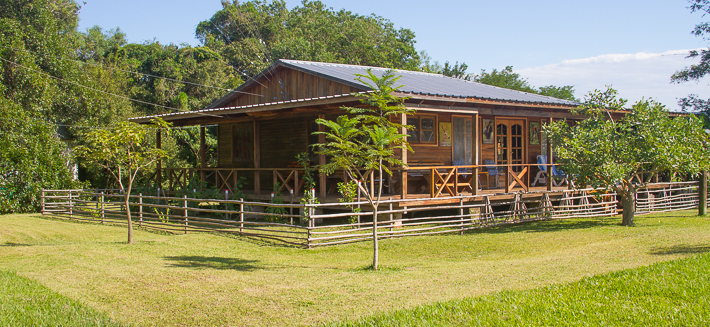
We have a family of seven Black Howler monkeys in the small wood behind the main house, and sometimes one wakes up to a cacophany of sound from these creatures. We appear to have a family of these shy creatures in each of our small woods so, on occasion, can hear a multi stereo chorus of sound, for example just before it rains. These monkeys are very quiet and keep themselves to themselves but seem to tolerate our presence. We believe that the males, when they reach a certain age, are banished from the troop and have to move on to other areas. Two of our volunteers have done behavioural studies on these shy mammals which can be found on our page Scientific reports. The juveniles are cream coloured, the females caramel and only the males are black.
Black Howler Monkeys
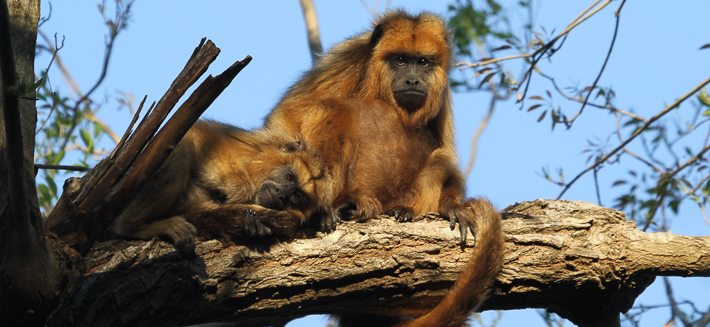
We had two Greater Rheas but sadly the male died a couple of years ago due to unknown causes. This species is unusual in that the male makes the nest in which he encourages several females to lay eggs. He then takes care of incubation and rearing the chicks.
Nero, Greater Rhea
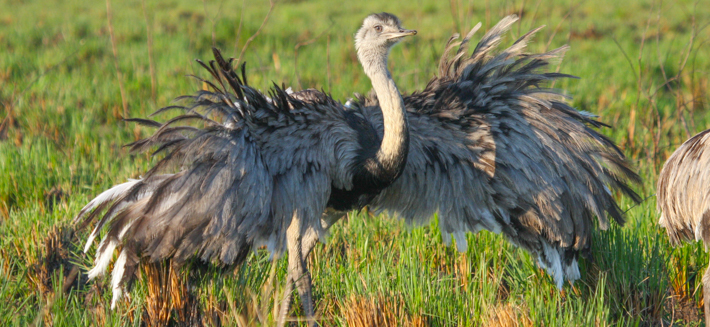
Our Laboratory is always ready for any new projects. We have incubating equipment although our rewilding project of the Curasow has been put on hold. We also have a microscope primarily to examine bat guano, plus our radio tracking gear, bat research equipment and medical stores.
This is the Laboratorio
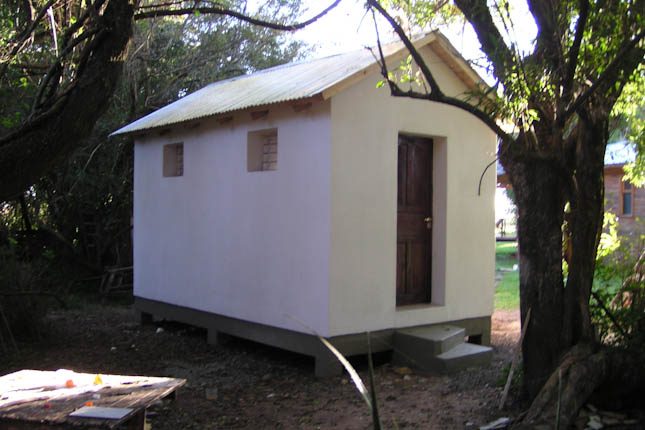
Empty interior - it is a lot more cluttered now!
-014.jpg)
We have now created an Argentine branch of the Collett Trust which is called FUCANA, and we hope in the future to gain some grants for our projects. Altogether we have 5 trustees for the two trusts.
Southern Tamandua which we rescued in 2014
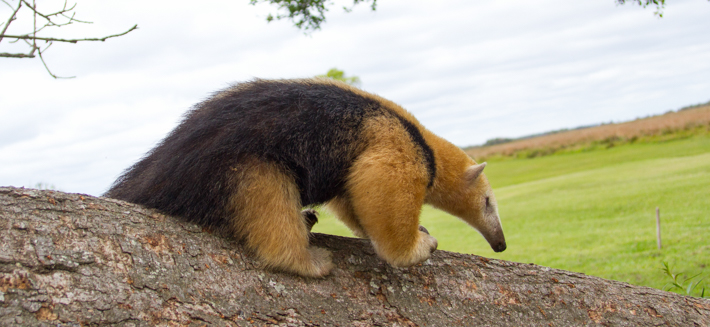
We completed the construction of our first bird aviary in 2014. It is a super tall structure designed specially for Bare-faced Curassow. We made it 10m x 5m with a height of 4m and a substantial amount of brick and cement under the surface to prevent foxes from getting in. We collected our first bird, a male, in April 2015 and put a lot of effort into finding a breeding pair so we could start to breed these highly endangered birds. We subsequently built a new aviary pending the arrival of our breeding pair.
Sadly our Bare-faced Curassow died in November 2018 of natural causes. He was nearly 30 years of age.
Bare-faced Curassow
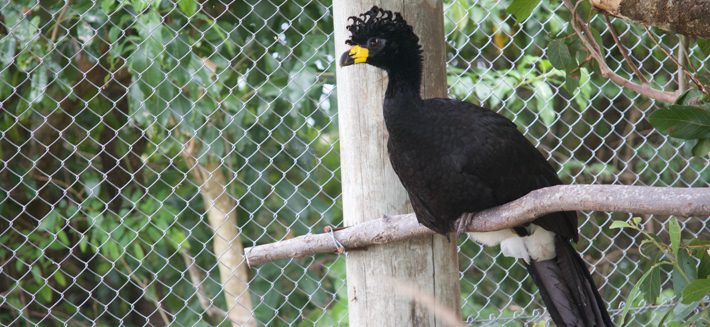
We struggled to fund the building of the Laboratorio and the two bird aviaries but have managed to pay some of it with a few kind donations and some fundraising. Thank you very much if you have donated, your currency will go a long way in Argentina. The radio-tracking equipment for these birds cost over £1000 ( $1600US) and each aviary so far has cost over £2000 ($3200).
I hate to ask for donations, but we need more money to fund these important projects. Please help if you are able.
Bird Aviary for future projects
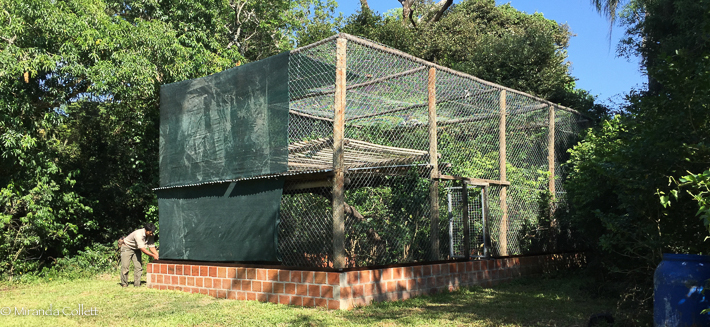
Two members of Team Muitu - Liliana our Vet and Miranda our Field Manager
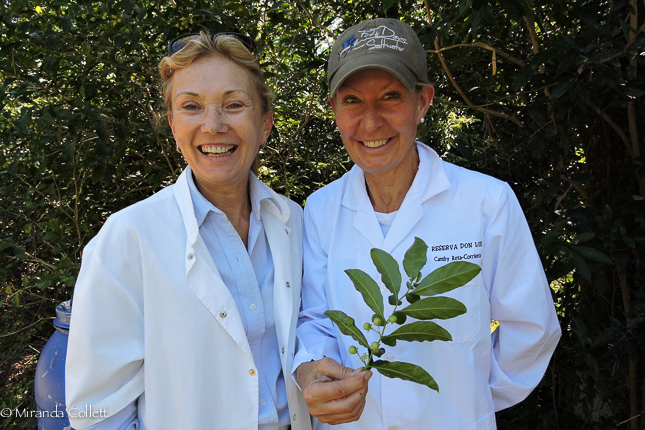
We are very thankful to our volunteers, some of whom have come out here from the UK and have all made a very useful contribution to our work. From top left they are Alex Roberts, Ed Robinson-Marray, Cassie Horton, Abel Yunis, Sergio Ramirez, Arturo Roselli, Sebastian Navajas, Edith Villordo, James Crees, Alex Buxton, Florencia and Sebastian, Martin Oporto, Lula Amato, Martin Rizzo, Melina, Valeria, Fede, Maria, Beatriz Luraschi, Gustavo Caceres, Molly Watson, Leo Geogadis, Melisa D'Occhio, Victoria Brenn, Ernesto Villa, Ezequiel 'Puma' Lis, Mariano Aimar, Lucas Preliasco
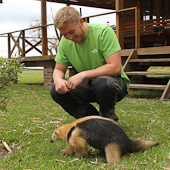
.jpg)
.jpg)
